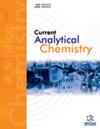主流樱桃红烟草烟雾化学成分研究
IF 1.7
4区 化学
Q3 CHEMISTRY, ANALYTICAL
引用次数: 0
摘要
简介::樱桃红烟草是一种烟道腌制的变种烟草,具有独特的 "糯米 "香味,受到烟草行业的高度重视。然而,由于烟草特有亚硝胺(TSNAs)可能对健康造成危害,樱桃红烟草的价值值得怀疑。研究目的本研究旨在调查 "糯米 "香味的化学来源,并评估 TSNAs 对健康的潜在危害。方法:采用气相色谱-质谱法进行了优化的非目标分析,并采用液相色谱-串联质谱法进行了目标分析:鉴定并定量了一百多种化合物。樱桃红烟草和正常对照组的四十三种化合物存在显著差异。主要差异在于吡啶生物碱及其衍生物。经证实,樱桃红烟草中尼古丁的脱甲基产物--去甲烟碱会热解成 3-乙基吡啶、3-甲基吡啶和其他同系物,并在吸烟过程中转移到烟雾中。研究发现,樱桃红烟草烟雾中的 N'-nitrosonornicotine 含量远高于普通烟道熏制烟草,而其他检测到的 TSNA 含量则较低。两种烟草中四种 TSNA 的总含量相似。结论在吸烟过程中,烟碱热解成 3-乙基吡啶及其同系物可能是樱桃红烟草产生 "糯米 "味的主要原因。TSNAs 的含量并不反映樱桃红烟草与对照组之间在健康风险方面的差异。本文章由计算机程序翻译,如有差异,请以英文原文为准。
Study on the Chemical Composition of the Mainstream Cherry-red Tobacco Smoke
Introduction:: Cherry-red tobacco is a flue-cured variant that possesses a distinctive “sticky rice” flavor, which is highly valued by the tobacco industry. However, the value of cherryred tobacco is dubious due to the possible health risks associated with tobacco-specific nitrosamines (TSNAs). Objective:: This study aimed to investigate the chemical origin of the “sticky rice” flavor and to assess the potential health hazards of TSNAs. Method:: An optimized untargeted analysis with gas chromatography-mass spectrometry and a targeted analysis with liquid chromatography-tandem mass spectrometry were conducted Result:: Over one hundred compounds were identified and quantified. Cherry-red tobacco and the normal control showed significant differences in forty-three of these compounds. Pyridine alkaloids and their derivatives constituted the main difference. Nornicotine, a demethylated product of nicotine in cherry-red tobacco, was confirmed to be pyrolyzed to 3-ethylpyridine, 3-methylpyridine, and other homologues, and transferred to the smoke during smoking. The smoke of cherry-red tobacco was found to contain much higher levels of N’-nitrosonornicotine, a TSNA derived from nornicotine, than that of normal flue-cured tobacco, while the levels of the other detected TSNAs were lower. The two types of tobacco had similar total amounts of the four TSNAs. Conclusion:: The pyrolysis of nornicotine into 3-ethylpyridine and its homologues during smoking may be the main cause of the “sticky rice” flavor of cherry-red tobacco. The level of TSNAs does not reflect the difference in health risk between cherry-red tobacco and the control.
求助全文
通过发布文献求助,成功后即可免费获取论文全文。
去求助
来源期刊

Current Analytical Chemistry
化学-分析化学
CiteScore
4.10
自引率
0.00%
发文量
90
审稿时长
9 months
期刊介绍:
Current Analytical Chemistry publishes full-length/mini reviews and original research articles on the most recent advances in analytical chemistry. All aspects of the field are represented, including analytical methodology, techniques, and instrumentation in both fundamental and applied research topics of interest to the broad readership of the journal. Current Analytical Chemistry strives to serve as an authoritative source of information in analytical chemistry and in related applications such as biochemical analysis, pharmaceutical research, quantitative biological imaging, novel sensors, and nanotechnology.
 求助内容:
求助内容: 应助结果提醒方式:
应助结果提醒方式:


